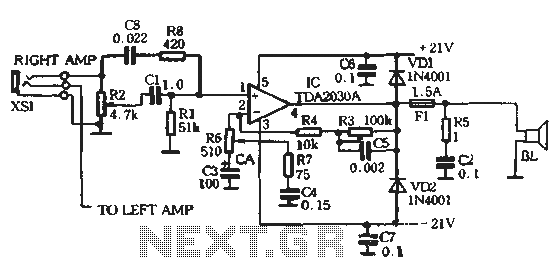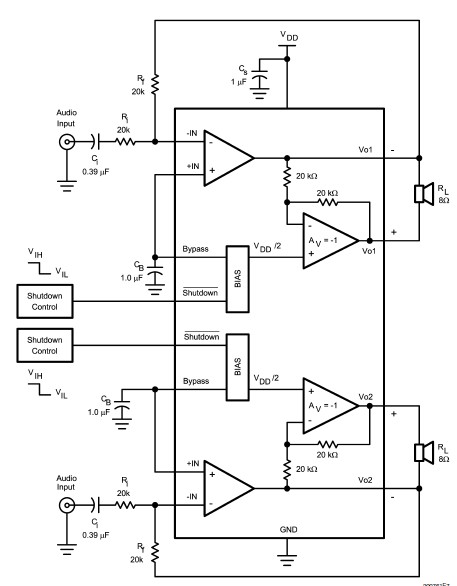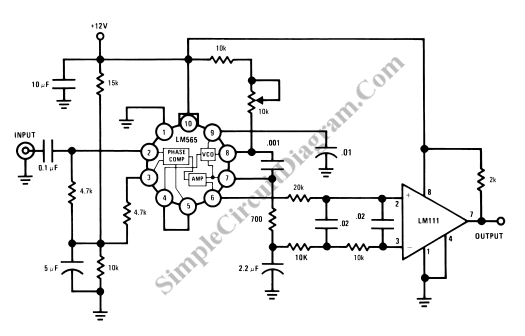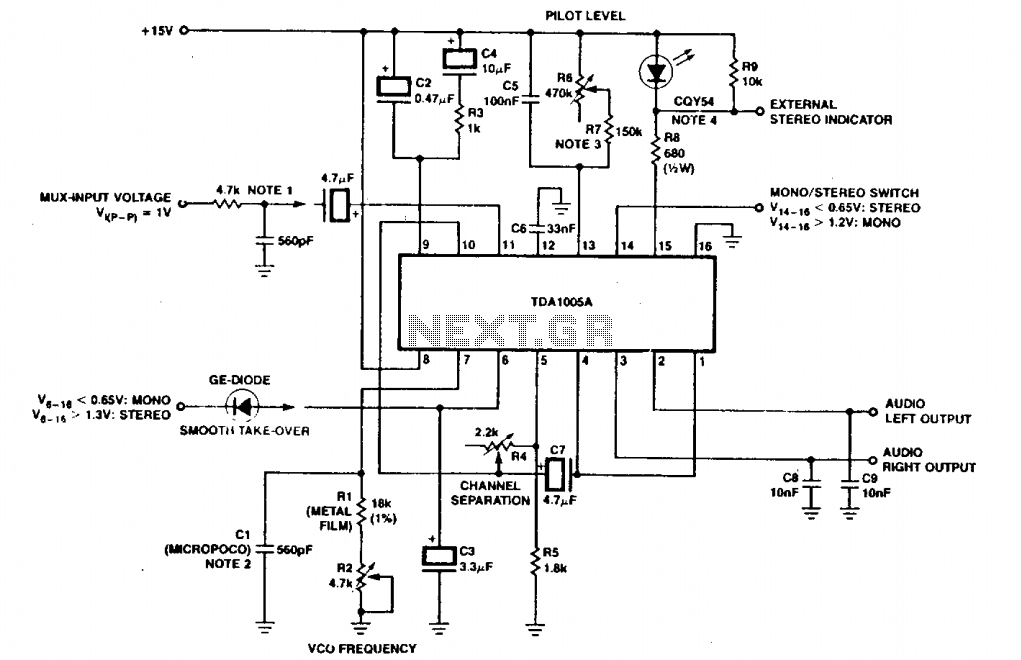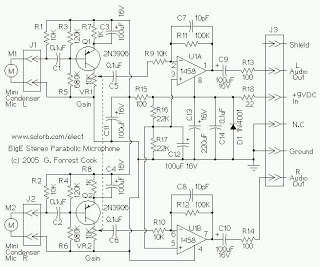
Stereo demodulator

This circuit utilizes a single integrated circuit, the LM1310, to provide left and right outputs from a composite MPX stereo signal. The oscillator adjust resistor R1 is configured for 76 kHz, which corresponds to 19 kHz at pin 10.
The LM1310 is a dedicated stereo demodulator designed for decoding multiplexed stereo signals. It effectively separates the left and right audio channels from a composite signal, making it suitable for applications in audio processing and broadcasting. The circuit's performance is heavily influenced by the choice of components, particularly the capacitor C1, which should be selected as a silver mica or NPO ceramic capacitor to ensure stability and low distortion in the audio output.
In this configuration, the oscillator circuit within the LM1310 generates a frequency of 76 kHz, which is essential for accurately demodulating the multiplexed signal. The resistor R1 plays a crucial role in setting this frequency, and any variations in its value can significantly affect the performance of the circuit. The output pins provide the separated left and right audio signals, which can be further processed or amplified as needed.
For optimal performance, it is important to maintain proper grounding and shielding in the circuit layout to minimize noise and interference. The selection of high-quality components, particularly in the signal path, will enhance the overall fidelity of the audio output. The design can be adapted for various applications, including FM radio receivers, stereo audio systems, and other multimedia devices requiring stereo signal processing.This circuit uses a single IC LM1310 to proyide left and right outputs from a composite MPX stereo signal. Oscillator adjust Rl is set for 76 kHz (19 kHz at pin 10). C1 should be a silver mica or NPO ceramic capacitor.
The LM1310 is a dedicated stereo demodulator designed for decoding multiplexed stereo signals. It effectively separates the left and right audio channels from a composite signal, making it suitable for applications in audio processing and broadcasting. The circuit's performance is heavily influenced by the choice of components, particularly the capacitor C1, which should be selected as a silver mica or NPO ceramic capacitor to ensure stability and low distortion in the audio output.
In this configuration, the oscillator circuit within the LM1310 generates a frequency of 76 kHz, which is essential for accurately demodulating the multiplexed signal. The resistor R1 plays a crucial role in setting this frequency, and any variations in its value can significantly affect the performance of the circuit. The output pins provide the separated left and right audio signals, which can be further processed or amplified as needed.
For optimal performance, it is important to maintain proper grounding and shielding in the circuit layout to minimize noise and interference. The selection of high-quality components, particularly in the signal path, will enhance the overall fidelity of the audio output. The design can be adapted for various applications, including FM radio receivers, stereo audio systems, and other multimedia devices requiring stereo signal processing.This circuit uses a single IC LM1310 to proyide left and right outputs from a composite MPX stereo signal. Oscillator adjust Rl is set for 76 kHz (19 kHz at pin 10). C1 should be a silver mica or NPO ceramic capacitor.
